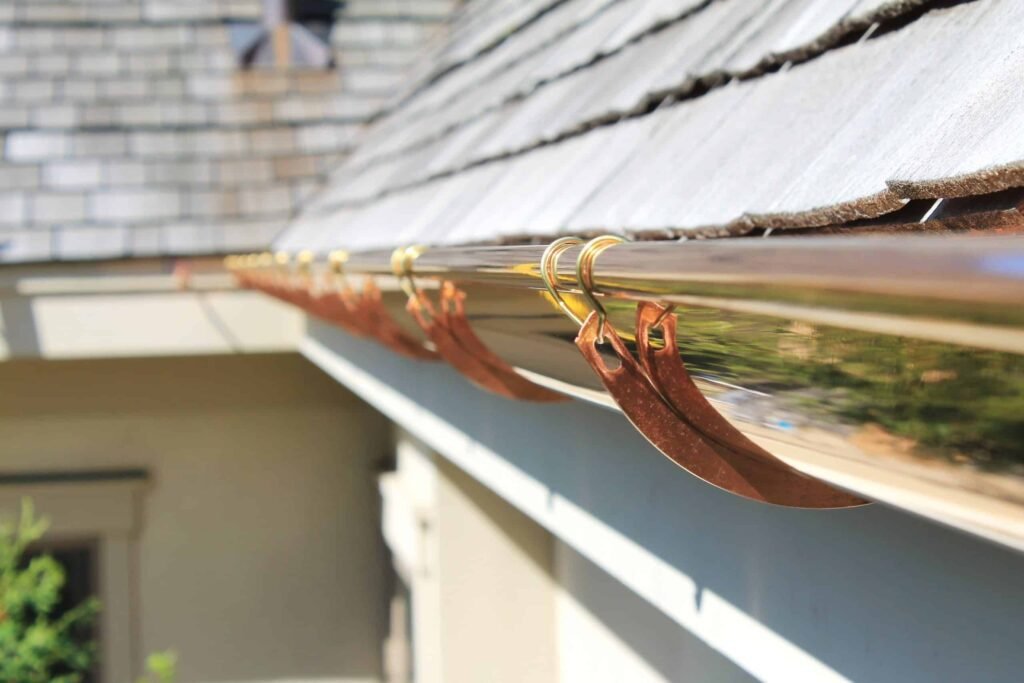Discover the various ways in which winter weather can wreak havoc on your roof. From ice dams to heavy snow loads, our comprehensive guide outlines the top five causes of roof damage during the winter months. Learn how to protect your home and extend the life of your roof with proactive maintenance and expert insights on mitigating these common winter threats.
As winter blankets our homes in a shroud of snow and ice, the structural integrity of our roofs faces a unique set of challenges. While roofs are designed to withstand various weather conditions, the cold, wet, and often unpredictable nature of winter weather can take a toll. In this comprehensive guide, we explore the top five ways that winter weather can cause roof damage and discuss solutions, including ice damming and snow removal services to help protect your home.
1. Safeguarding Your Home Against the Threat of Ice Dams

Ice dams are one of the most common and damaging consequences of winter weather. They form when heat escapes from your home, causing the snow on your roof to melt and then refreeze at the eaves, where the roof’s edge is colder. This frozen barrier acts like a dam, preventing water from draining off your roof.
Moreover, the weight of ice dams can place stress on your roof’s structure, potentially leading to structural damage or even collapse. As they persist, ice dams can exacerbate the freezing and thawing cycle, creating further vulnerabilities in your roofing materials. When water is trapped behind these ice dams, it can infiltrate your home through even the tiniest openings, leading to leaks, water damage, and even mold growth. Hiring professional Ice Damming Removal Services can help you safely and effectively remove the ice dams, protecting your roof and home from further damage.
Hot wires that run up and down your roof to melt snow and ice are called roof heating cables, and they’re basically hot wires that run up and down your roof to prevent and eliminate the possibility of ice dams on roof edges.
2. Protecting Your Roof From Heavy Snow

While the view outside can be picturesque, the accumulation of heavy snow on your roof can pose a significant and often underestimated threat to your home’s structural integrity. Roofs, resilient as they are, have limitations when it comes to the weight they can bear, and when these limits are surpassed, it can lead to a series of concerning issues.
The weight of snow can vary significantly, depending on factors such as snow density and moisture content. But one thing remains constant—roofs are designed to handle a specific load, as determined by building codes and engineering standards.
When heavy snow accumulates on your roof, it can exceed the load-bearing capacity that your roof’s design accounts for. The consequences of this excess weight can be severe. Your roof may begin to sag under the burden, a visible sign that damage is occurring. This sagging can lead to structural issues, compromising the integrity of your home’s framework.
In extreme cases, where the weight of the snow is simply too much for the roof to handle, there’s a risk of partial or complete roof collapse.
Professional snow removal services can play a pivotal role in this endeavor. These experts have the experience, equipment, and safety protocols to efficiently remove snow from your roof, reducing the risk of damage and ensuring your home’s safety during the winter months.
3. Freeze-Thaw Cycle
Winter brings not only the serenity of snow-covered landscapes but also a meteorological phenomenon that can silently undermine your roof’s integrity: the freeze-thaw cycle. This natural occurrence, driven by fluctuating temperatures, poses a consistent threat to the condition of your roof.
The freeze-thaw cycle is a weather pattern that occurs as temperatures oscillate between freezing and thawing. During the day, when temperatures rise, any accumulated snow and ice on your roof begin to melt. However, as night falls and temperatures drop once more, the melted water refreezes.
While this cycle may seem innocuous, it can have detrimental effects on your roof over time. The expansion and contraction of ice and water within gaps and cracks in your roofing materials can weaken their structure. As these openings enlarge, they provide pathways for water to infiltrate your roof. To mitigate the potential damage, it’s essential to consider professional Roofing Services that can assess, maintain, and properly seal your roof to withstand the challenges posed by the freeze-thaw cycle.
4. The Significance of Icicles on Your Roof

Icicles materialize when melted snow, often from a combination of heat escaping from your home and solar radiation, flows down your roof’s surface. As it reaches the eaves—where the roof’s edge is colder—the once-flowing water refreezes. This freezing process gives birth to icicles, which can assume various shapes and sizes, depending on the conditions.
While icicles themselves may not inflict immediate harm, they serve as a warning sign of potential issues with your roof and gutters. Icicles can place added weight and stress on your gutters, potentially causing them to sag or pull away from the roofline. Damaged gutters are less effective at channeling water away from your home, which can lead to water infiltration and damage.
The presence of icicles often indicates that there is uneven heat distribution on your roof. This imbalance can contribute to the formation of ice dams, which can damage your roofing materials, leading to leaks and other problems. As ice dams and icicles accumulate, they can obstruct the natural flow of water off your roof. This obstruction may result in water backing up under your shingles or into your attic, leading to water damage and potentially mold growth.
Regularly removing icicles is an important part of protecting your roof. However, it’s equally crucial to address the underlying issue that’s causing their formation. This issue typically relates to the insulation and ventilation of your attic, as well as the condition of your roofing materials. To tackle these root causes effectively, consider enlisting a professional Ice Damming and Snow Removal Service who can diagnose and resolve these issues.
5. The Vital Role of Gutters in Roof Protection

Gutters’ effectiveness can be compromised, particularly during the winter months, when they face the threat of becoming clogged with ice and debris. Understanding this challenge and adopting a proactive approach to gutter maintenance, which may include enlisting the help of our team, can make a world of difference in preserving your roof and your home.
When debris, such as leaves, twigs, or shingle granules, has already found its way into the gutters, it can combine with the flowing water to create blockages. Clogged gutters, though often underestimated, can lead to significant issues for your roof and home. When gutters overflow due to blockages, the water can infiltrate areas it shouldn’t, including your roofing materials, the fascia board, and even your home’s interior. The outcome can include leaks, water damage, wood rot, mold growth, and even structural issues. These problems can be costly to repair and may pose risks to your health and safety.
To prevent the damage caused by clogged gutters, regular maintenance is paramount. This involves keeping your gutters clear of debris and ensuring that water can flow freely and unobstructed. In regions where heavy snowfall and ice dams are common, considering snow removal services can be particularly beneficial. These professionals have the expertise and equipment to not only remove ice dams but also clear your gutters of ice and debris, ensuring they remain effective throughout the winter.
By taking a proactive approach to gutter maintenance, you can prevent potential roof damage and the associated issues that water infiltration can bring. Gutters, often overlooked, are indeed the guardians of dryness, and their care is essential to preserving the integrity and longevity of your roof and home.


